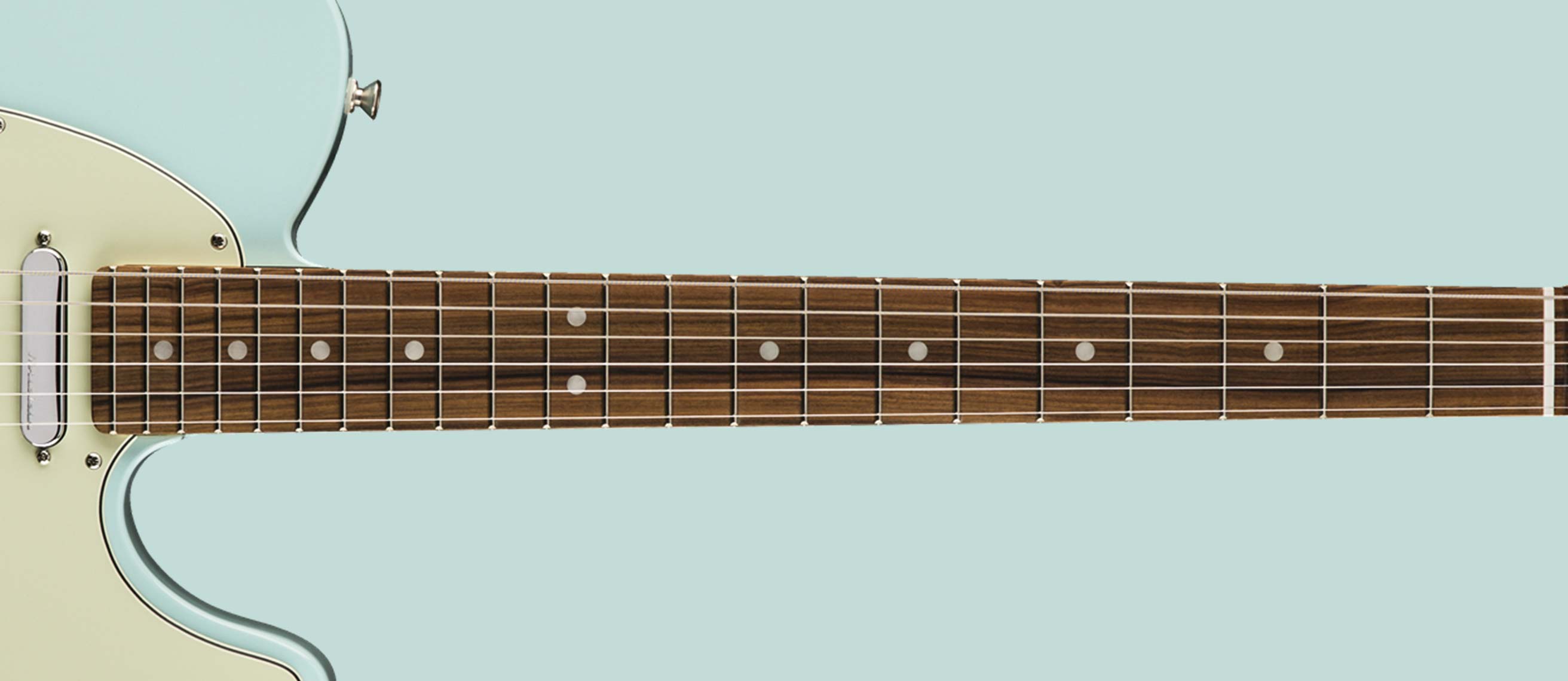Discover the fretboard tonewood Fender will be using in new guitars and basses.

With its infamous “SRV” pickguard, gold-plated hardware and upside-down tremolo system, the Stevie Ray Vaughan signature Stratocaster has its own eye-catching style.
But there is one important feature of this legendary guitar that sometimes gets overlooked—the pau ferro fingerboard.
A great wood for instrument fingerboards, pau ferro is a South American tonewood with a smooth feel and sonic characteristics similar to rosewood, but lighter in color and harder.
And it is a wood that Fender will be using much more of now that CITES laws regulating how rosewood is traded internationally came into effect on Jan. 2, 2017.
CITES (or the Convention of International Trade of Endangered Species of Flora and Fauna) is a global agreement that has existed since 1975 to ensure international trade of wildlife does not threaten the health of species and ecosystems.
In a conference held late last year, it was decided that rosewood, namely Indian and Indonesian rosewood (more specifically, the genus Dalbergia and three bubinga species—Guibourtia demeusei, Guibourtia pellegriniana, and Guibourtia tessmannii), will be protected under CITES Appendix II. That means any transportation or shipment of an instrument or instruments for commercial purposes with any amount of rosewood requires a CITES Export Certificate issued by the U.S. Fish and Wildlife Service, and possibly a CITES Import Permit required by the receiving country.
Enter pau ferro. The wood that has been the fretboard for the Stevie Ray Vaughn Strat for many years will see wider incorporation into instruments made in Fender’s Ensenada, Mexico, factory.
Pau ferro’s warm tone is tempered by its snappy attack, creating a crisp, clear sound ideal for fingerboards.
“Pau ferro is actually called ‘Bolivian rosewood’ in some circles, and we’ve used it on models in the past,” said Senior Vice President of Fender Products Justin Norvell. “It’s actually been used as a well-known alternative for rosewood for a long time, and it’s often available in wider widths, so we used it on a lot of our five-string basses in the ‘90s. It’s a wood we’re familiar with.”
Pau ferro was one of the first solutions Norvell and others on the Fender product team landed upon when discussing the CITES regulations in January around the annual NAMM Show.
“In looking at options, our main focus was first and foremost on guaranteeing the best possible sounds and feel,” said Fender Director of Wood Technology Mike Born. “We were already using Pau Ferro in some models right now, so we could successfully switch to Pau Ferro. By January, we made the decision to jump on Pau Ferro and start getting it into our process. And it’s a good thing we did right at that point.”
The SRV Strat is not the only instrument that currently has pau ferro fingerboards, as the Jaco Pastorius Jazz Bass also carries one.
“The reason that Pau Ferro was one of the best options is that we’ve had experience with it for a long time,” Born noted. “It’s got a very similar hardness and oil content to rosewood. We know it’s got a good tone to it. And it’s got a nice, dark color.”
Fender players can keep an eye out for pau ferro fingerboards on guitars and basses in the Standard Series, Deluxe Series and Classic Series, in addition to many other instruments made in Mexico.
“Fender is committed as a brand to comply with all CITES regulations and to ensure we are continuing to deliver the best quality and accessible products to our customers and dealers,” said Fender CEO Andy Mooney.
